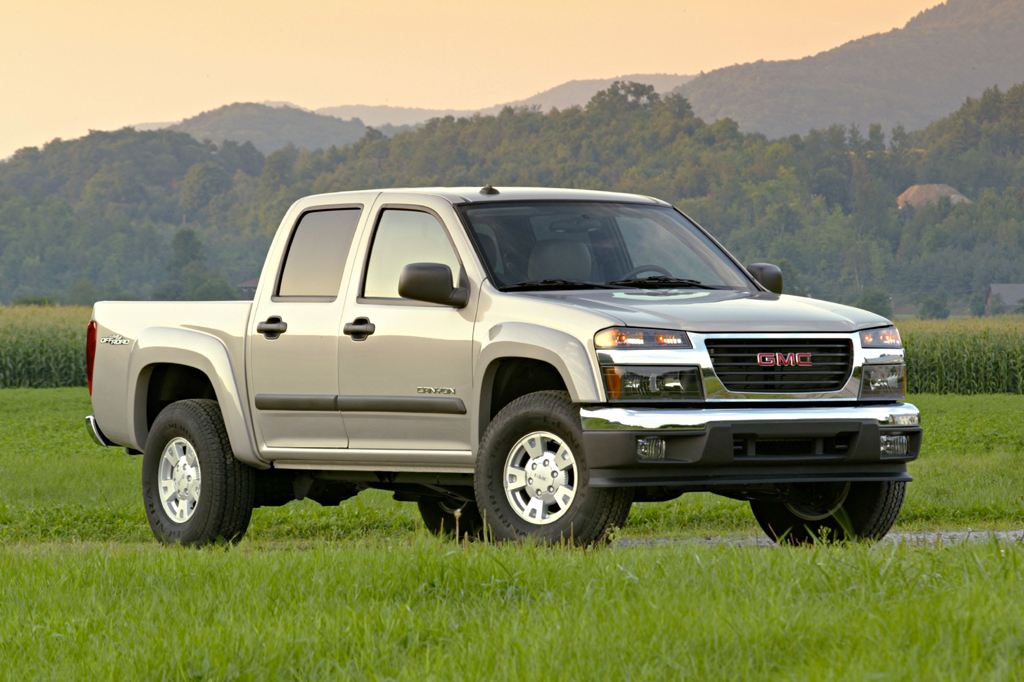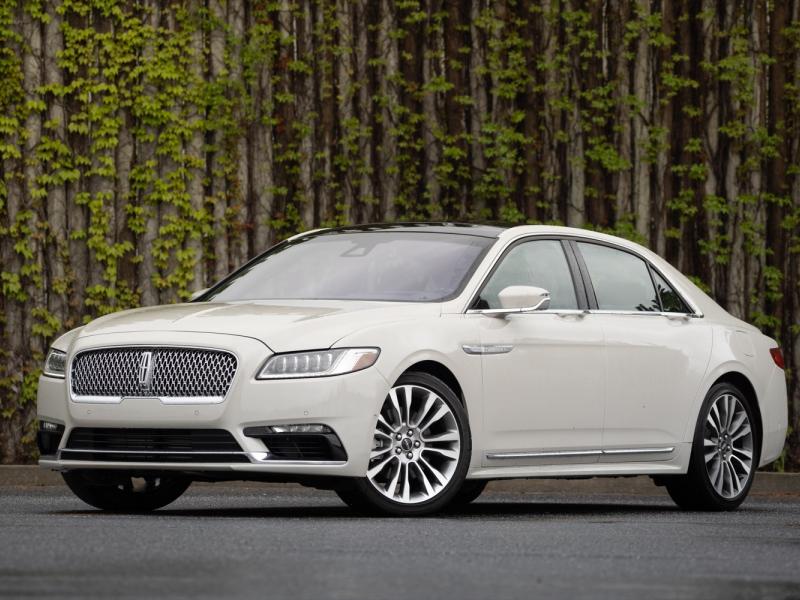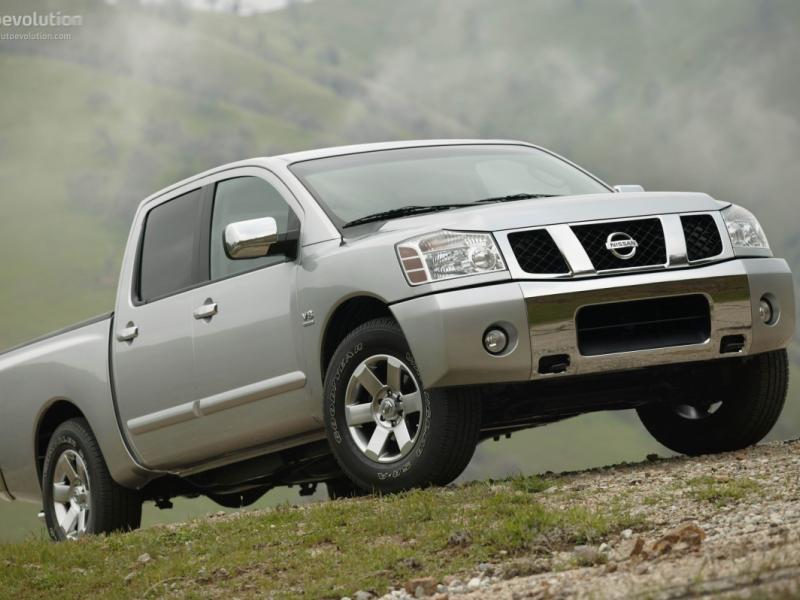New Honda Pilot ready for take off
These days, minivan-avoiders far outnumber minivan-lovers. The “soccer team on board” sticker in the rear window can be a scary thing. And even though Honda has in the Odyssey perhaps the best minivan on the market, America’s top-selling multi-purpose vehicle last year was the 5-passenger CR-V crossover SUV.
There apparently wasn’t enough fairy dust left over for the 8-passenger Honda Pilot crossover SUV, however, which got outsold by the Ford Explorer in 2014 by an almost two-to-one ratio. Not that the Pilot didn’t offer minivan surrogate roominess and utility. It’s just that the square-jawed Mr. Roboto look of the 2009-2015 model fell out of fashion. Honda’s 2016 Pilot addresses that by tossing the old boxy shape for a sleek and refined-looking wrapper straight out of crossover Central Casting.
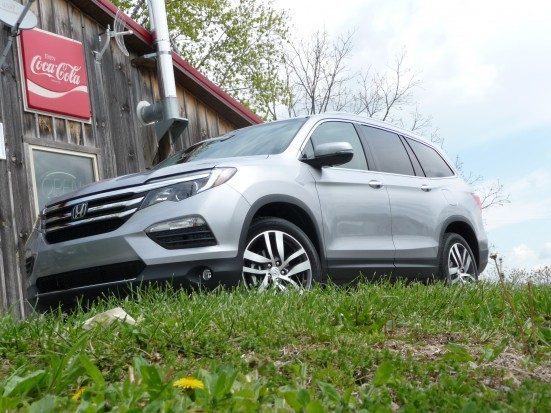
Image credit: Ron Sessions
The new Pilot, sharing underbody structure and parts with the 2016 Acura MDX, is sleeker—more streamlined in profile. There are stylish touches such as LED exterior lighting and 20-inch aluminum wheels on some models. It now stretches 3-1/2 inches longer bumper to bumper and sits 1 inch lower to improve ingress/egress through those non-sliding side doors. Honda says the new body is 286 pounds lighter than the last version’s and is 25 percent stiffer, making for a quieter structure and a solid platform for the suspension bits to bolt to. There are two new upper-level trims—Touring and the AWD-only Elite—that come loaded with a full array of infotainment and safety tech.
Changes are More Than Skin Deep
Under the hood lives a slightly detuned version of the direct-injected 3.5-liter V6 in the Acura MDX premium crossover. At a healthy 280 horsepower—30 more than last year’s, it adds some zip and runs on less-expensive regular unleaded, not the premium recommended for the Acura’s tank. There are new transmissions as well; a 6-speed automatic from the Odyssey minivan replaces the old 5-speed in the base LX, EX and EX-L models and a new ZF 9-speed auto with console-mounted push-button shifting comes with the upper-level Touring and Elite trims.
Also included with Touring and Elite is a new stop/start system that automatically shuts off the engine at stoplights to save fuel, then restarts (with a little bump) when you move your foot off the brake pedal and onto the accelerator.
Image credit: Honda
Two-wheel-drive models equipped with the new 9-speed and stop/start get the best 2016 Pilot EPA mileage estimates—20 mpg city/27 mpg highway—with the least fuel-efficient Pilot models with 4WD and the 6-speed automatic pegged at a respectable 18 mpg city/26 mpg highway.
There is also a new all-wheel-drive system (Intelligent Variable Torque Management) for 2016 that apportions drive torque between the front and rear axles and side to side between the rear wheels and includes torque vectoring to sharpen handling under all types of road conditions. In addition, all 2016 Pilots get a driver-selectable Intelligent Traction Management system that offers Normal and Snow modes for front-drive models and Normal, Snow, Mud and Sand settings for AWD versions.
Inside Those Non-Sliding Doors
Okay, so the 2016 Pilot can’t beat the Odyssey for cargo room (a little more than half the minivan’s), third-row space (with nearly a foot less legroom back there) or rear compartment access for kids, pets and seniors (no sliding side doors). But Honda has improved third-row access for the new Pilot with a new one-touch second-row seat slider (illuminated at night) and increased step-through space. That’s a good thing because one of the Pilots four LATCH child-seat anchor points are back there (three are in the second row).
Image credit: Honda
The new Honda Pilot offers a number of interesting storage solutions as well. There’s a reversible rear cargo shelf that’s carpeted on one side and rubberized on the other for messy or wet items. The lid can be moved up or down, tilted or removed entirely to create a large stowage bin in the rear of the cargo floor. Up front a new center console has a seamless sliding top and is deep enough to stash a purse or laptop inside.
On all but the base LX, there’s a new hi-res 8-inch touchscreen infotainment display as well as a total of five USB ports, four of them the newer 2.5-amp variety for simultaneous quick charging and device viewing. Touring and Elite models feature Pilot’s first-ever panoramic sunroof over the second and third rows. The rear entertainment system now has Blu-Ray capability. In general, the new Pilot’s interior materials and finishes are a grade above those in the previous version.
Image credit: Honda
Semi-Autonomous Safety
Most impressive for a family vehicle is the Honda Sensing system, a suite of safety and driver-assistive technologies that makes the Honda Pilot, on occasion, semi-autonomous. While we can’t minimize the serious consequences of driver inattentiveness or distraction, whether it is caused by dealing with a misbehaving child or pet, adjusting the climate control or audio system or worst-case scenario, looking at a smartphone or other infotainment device, the system has the potential to warn the driver and in many cases, assist the driver in avoiding driving dangers.
Forward Collision Warning, Blind Spot and Rear Cross Traffic Monitor systems use radar sensors and/or a monocular camera to warn the driver of obstacles. When activated by the dynamic cruise control main switch, Lane Keeping can detect yellow and white lines, and lane reflectors or Bott’s dots, and apply subtle corrective torque to the electric power steering system to help the driver keep the SUV in its lane (if the turn signal isn’t activated).
Road Departure Mitigation delivers a haptic steering wheel buzz, flashes a warning light and gives stronger corrective torque; it can even apply the brakes if it senses the car is leaving its lane unintentionally. RDM can be switched off if not wanted or needed.
But of all the Honda Sensing safety stuff, the most dramatic–Collision Mitigation–was saved for a white knuckle demonstration at Kentucky Speedway. Simply put, this isn’t a test we’d try on public roads, but the system could be a life saver. It’s standard or available on all 2016 Pilots but the base LX model. In a series of ever faster runs between 20 and 40 mph, we drove straight at a “nerf” car parked on the track and in each case the Pilot performed an emergency stop short of the target without us ever applying the brake pedal.
On the Road
For all but a dedicated core of minivan buyers, the three-row crossover has taken its place as the family schlepper. So it’s okay that at the end of the day, the Pilot drives like a minivan—and a very good one at that.
Underway, the new Pilot is hushed inside with little road, engine or wind noise to speak of, likely aided by an acoustic windshield and (on Touring and Elite) acoustic front side glass as well. The ride quality is family appropriate, thanks to new amplitude-reactive shocks and a redesigned multi-link rear suspension.
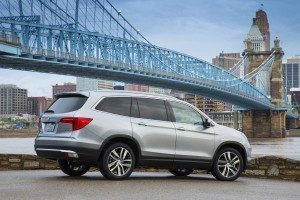
Image credit: Honda
The new electrically assisted steering, while a bit light in low-speed driving, heavies up on the highway but doesn’t have a particularly connected feel to the road. The 4-wheel discs provide good bite but could be more responsive at top of pedal.
We saw an average indicated 20.4 mpg over about 50 miles on interstates and twisty rural two-lanes.
Bottom line; the 2016 Honda Pilot is a stylish, roomy and pleasant-driving people mover available with impressive technology. And it’s not a bad way to transport a junior league soccer team either.




Post Tagged: 2016 Pilot, Honda, Honda Pilot, SUV

